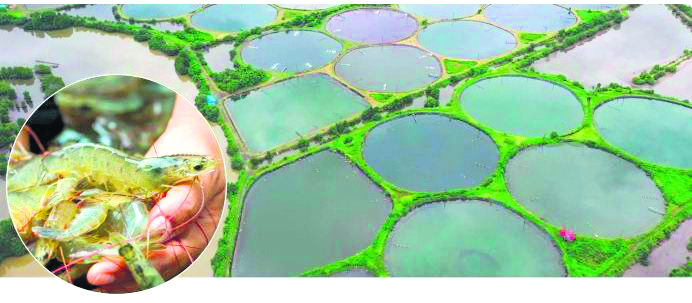


Increasing expenses in farming have compelled the agrarian community to shift away from agriculture, necessitating both the state and central governments to implement additional measures to strengthen the financial standing of farmers. Despite the continuous challenges faced by farmers, the state government in Haryana has been actively promoting fish farming as an alternative. In the year 2022-23, 45,015 hectares of land were dedicated to fisheries, and by October 2023-24, this area had expanded to about 47,000 hectares. The fish production, particularly shrimp, has also seen a steady increase.
For shrimp production (saltwater fish), the target was set at 5,681 metric tons in 2022-23, and it increased to 7,518 metric tons in 2023-24. White prawns, a type of saltwater fish, are being produced on a large scale in various districts, including Jhajjar, Rohtak, Bhiwani, Charkhi Dadri, Gurugram, Faridabad, and Rewari. It’s worth noting that in 2014-15, shrimp farming covered only 70 acres, producing 140 metric tons. This has now expanded to 1,250 acres with a production of 2,900 metric tons in 2021-22.
However, fishery professionals are grappling with power consumption issues, as the government is supplying less power than the demand requires. Dharmender, the Director of the Fisheries Department, emphasized the steps taken to promote fisheries, provide quality seeds, and engage in discussions with banks and insurance companies for insurance facilities. The government is also investing in research for new varieties of fish farming and seed development.
To ensure timely seed availability, the department has established 15 seed hatcheries, including 8 government and 7 private hatcheries. Fish farmers are benefiting financially, and steps have been taken to reduce dependency on other states for fish feed. Twelve feed mills have been set up in Haryana, providing feed to fish farmers.
Various schemes, including the Matsya Sampada Yojana, offer subsidies to promote fisheries. The passage highlights the success of fish farming in Haryana, with districts adjacent to Delhi benefiting from the capital’s large market. The annual fish production in Haryana has risen significantly, reaching 210,500 metric tons in 2022-23. Despite limited water resources, Haryana ranks second in the country in average annual fish production per unit area, with an average of 7,000 kg per hectare compared to the national average of 2,900 kg.